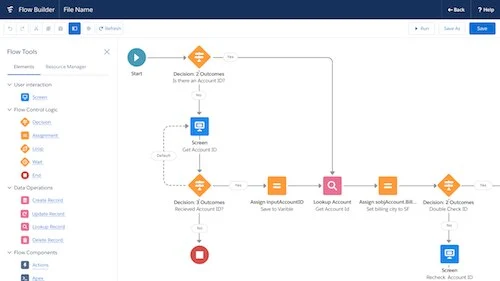Boosting Salesforce Security: Shielding Your Organization from Cyber Threats
In today’s digitally driven landscape, safeguarding your Salesforce organization from cyberattacks is paramount. With the escalating frequency and sophistication of cyber threats, a comprehensive security strategy is essential to ensure the integrity of your data and operations. In this article, we’ll delve into key methods to fortify your Salesforce security and ward off potential cyber adversaries.
Understanding the Cybersecurity Landscape for Salesforce
To effectively protect your Salesforce org, it’s crucial to comprehend the prevailing cybersecurity landscape. Cybercriminals are constantly devising new techniques to exploit vulnerabilities and gain unauthorized access to sensitive information. Staying one step ahead requires a combination of vigilance, robust security measures, and continuous monitoring.
Regular Software Updates and Patches
Regularly updating your Salesforce software and promptly applying patches is a foundational defense against cyber threats. Outdated software often contains known vulnerabilities that hackers can exploit. By ensuring your software is up-to-date, you minimize the risk of falling victim to attacks targeting these vulnerabilities.
Multi-Factor Authentication (MFA)
Implementing MFA adds an extra layer of protection by requiring users to provide multiple forms of verification before accessing the Salesforce platform. This can include a combination of passwords, biometric data, or security tokens. MFA significantly reduces the risk of unauthorized access, even if login credentials are compromised.
Role-Based Access Control (RBAC)
RBAC is a strategy that limits system access to authorized personnel based on their roles and responsibilities. By granting the least privilege necessary to perform tasks, you reduce the potential damage that can be caused if a user’s account is compromised. This principle enhances overall security by minimizing the attack surface.
Detecting and Responding to Intrusions
Implementing Intrusion Detection Systems (IDS)
An IDS monitors network traffic and system activity for signs of unauthorized access or malicious behavior. When unusual or suspicious activity is detected, the system can trigger alerts or take automated actions to mitigate potential threats. IDS plays a crucial role in identifying and addressing security breaches in real time.
Incident Response Planning
Developing a comprehensive incident response plan is vital for minimizing the impact of cyber incidents. This plan outlines the steps to take in the event of a breach, including containment, investigation, communication, and recovery. Having a well-defined plan ensures a swift and coordinated response, reducing downtime and damage.
Education and Training
Employee Cybersecurity Training
Human error remains one of the leading causes of security breaches. Providing regular cybersecurity training for employees helps raise awareness about potential threats, phishing scams, and best practices for maintaining data security. Well-informed employees are better equipped to recognize and respond to suspicious activities.
Security Awareness Programs
Organizations can implement security awareness programs to foster a culture of cybersecurity consciousness. These programs educate employees about the latest threats, common attack vectors, and the importance of adhering to security protocols. A vigilant and informed workforce serves as an additional line of defense.
Continuous Monitoring and Improvement
Security Audits and Penetration Testing
Regular security audits and penetration testing are indispensable for identifying vulnerabilities and weaknesses in your Salesforce setup. These assessments simulate real-world attacks to evaluate the effectiveness of your security measures. By addressing the issues uncovered, you enhance your organization’s overall resilience.
Adaptive Security Measures
As cyber threats evolve, your security measures should evolve as well. Implementing adaptive security solutions allows your organization to respond dynamically to emerging threats. This can involve adjusting access controls, modifying security policies, and adopting new technologies to counteract evolving risks.
In conclusion, safeguarding your Salesforce organization from cyberattacks demands a proactive approach that encompasses technical solutions, user education, and continuous improvement. By staying informed about the latest threats and employing a comprehensive security strategy, you can confidently navigate the digital landscape while protecting your valuable data and operations. Remember, cybersecurity is an ongoing journey, and your commitment to it will fortify your organization’s defenses for years to come.




